- Advertised capacity: 32GB
- Logical capacity: 30,945,574,912 bytes
- Physical capacity: 30,945,574,912 bytes
- Fake/skimpy flash: Skimpy (3.30% skimp)
- Protected area: 83,886,080 bytes (inaccessible)
- Speed class markings: Class 10*, U1, V10, A1
- CID data:
- Manufacturer ID:
0x27** - OEM ID:
0x5048(ASCII:PH)** - Product name:
0x5344333247(ASCII:SD32G) - Product revision:
0x60
- Manufacturer ID:
| Sample # | 1 | 2 | 3 | 4 | 5 | 6 | Average |
|---|---|---|---|---|---|---|---|
| Obtained from | Amazon | AliExpress | Amazon | AliExpress | Amazon | AliExpress | N/A |
| Price paid | $8.30 | $4.48 | $8.30 | $4.48 | $8.30 | $4.48 | $6.39 |
| Manufacture date | Feb 2023 | May 2023 | Feb 2023 | May 2023 | Feb 2023 | May 2023 | N/A |
| Serial number | 0x6c5202a6 | 0x01af9781 | 0x6c5202f6 | 0x01aab823 | 0x6c51ea11 | 0x01af8750 | N/A |
| Sequential read speed (MB/sec) | 91.36 | 90.92 | 91.23 | 86.30 | 90.83 | 91.48 | 90.35 |
| Sequential write speed (MB/sec) | 38.28 | 42.58 | 36.42 | 40.62 | 36.95 | 40.62 | 39.25 |
| Random read speed (IOPS/sec) | 2215.15 | 2390.59 | 2072.70 | 3729.20 | 2407.14 | 2334.70 | 2524.91 |
| Random write speed (IOPS/sec) | 590.49 | 638.31 | 580.48 | 688.02 | 588.55 | 633.21 | 619.84 |
| Read/write cycles to first error | 479 | 3,528 | Not yet determined | 2,729 | 126 | 5 | 1,373 |
| Read/write cycles to complete failure | Not yet determined | Not yet determined | Not yet determined | Not yet determined | Not yet determined | Not yet determined | Not yet determined |
| Total days to complete failure | Not yet determined | Not yet determined | Not yet determined | Not yet determined | Not yet determined | Not yet determined | Not yet determined |
| Card reader used | Lexar LRWM05U-7000 | JJS CR-UTC4AC | JJS CR-UTC4AC | JJS CR-UTC4AC | JJS CR-UTC4AC | JJS CR-UTC4AC | N/A |
| Package front | 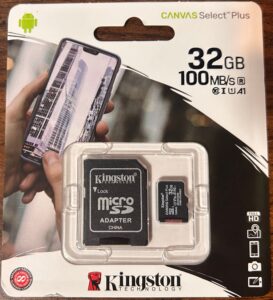 | 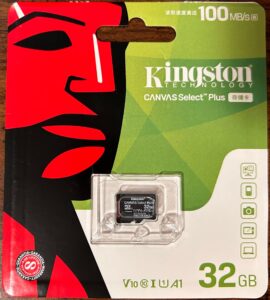 | 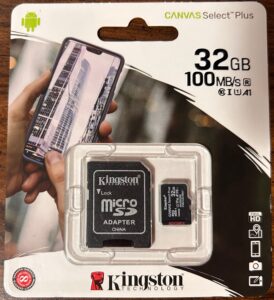 | 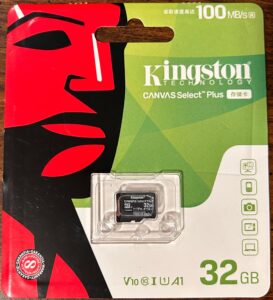 | 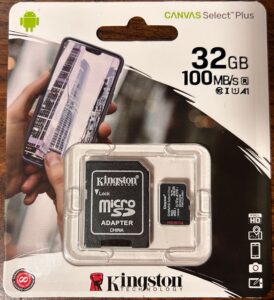 | 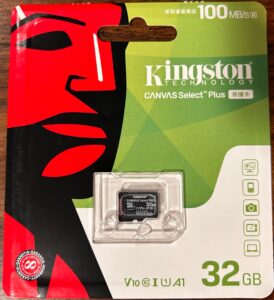 | N/A |
| Package back | 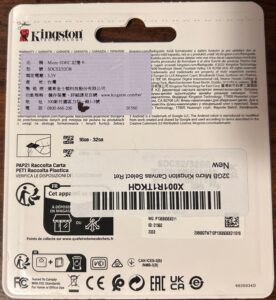 | 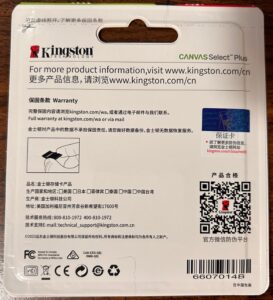 | 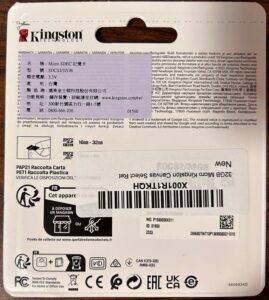 | 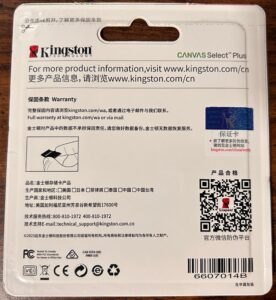 | 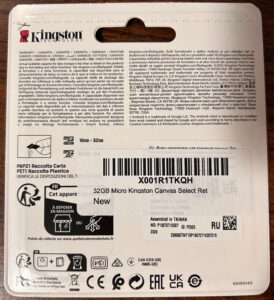 | 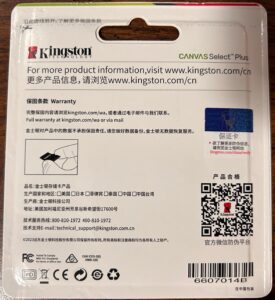 | N/A |
| Card front | 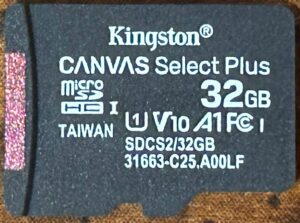 | 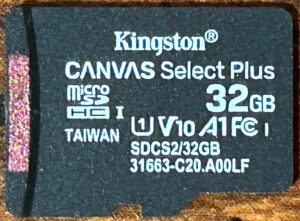 | 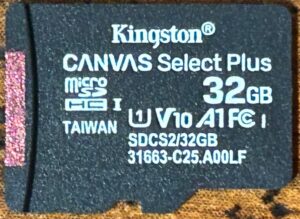 | 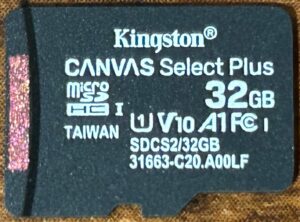 | 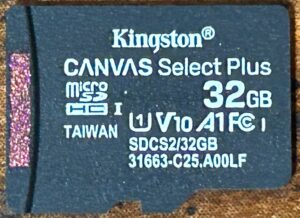 | 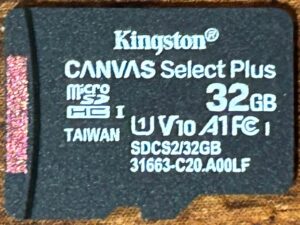 | N/A |
| Card back | 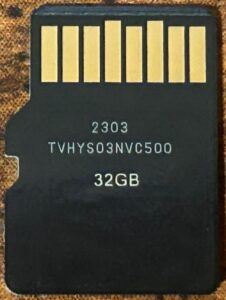 | 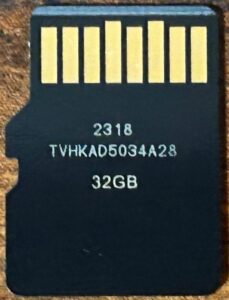 | 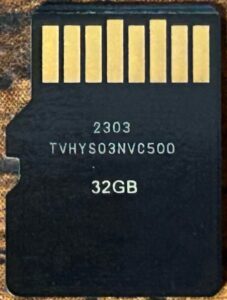 | 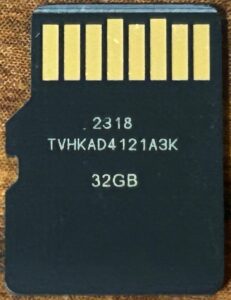 | 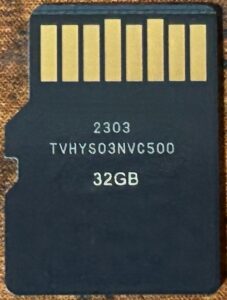 | 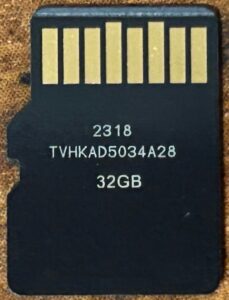 | N/A |
* The Class 10 mark appears on the product packaging, but does not appear on the card itself.
** This manufacturer ID/OEM ID is well known to be associated with Phison Electronics Corporation.
Discussion
I have something of a bias against Kingston cards. I have a number of single-board computers that use microSD cards as their boot device; and while I’ve typically used SanDisk cards for this, occasionally a Kingston card or two has found its way into the mix, and it seems like the Kingston cards have always failed long before any of the SanDisk cards have. However, these are just anecdotes — I don’t have any hard data to back up the idea that Kingston cards are less reliable than other brands. Because of this, I wanted to give them a fair chance to prove themselves — so I purchased three from Amazon and three from AliExpress.
The US and Chinese versions of the cards are — as far as I can tell — identical. The CID data (with the exception of the manufacture date and serial number) is identical between the two versions. They all performed pretty similarly in performance tests. The exterior also appears to be identical, including this interesting color-shifting stripe on the left edge:
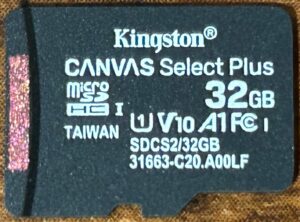 | 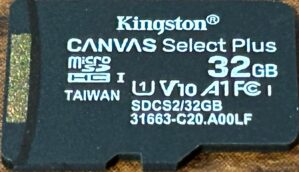 |
I know that when Bunnie (of Bunnie Studios) went looking for various Kingston cards in the Chinese markets, he described at least one instance where he saw non-Kingston cards being put into Kingston retail packaging — so I suspect that Kingston did this as a way to assure buyers that these cards were authentic.
The primary difference between the US and Chinese versions seems to be the packaging. And curiously, there’s a notable difference here: the US and Chinese versions of the packaging: the Chinese packaging is not tamper-evident. The card can be accessed by opening a simple flap on the front of the package; the card can be replaced, and the flap closed, without causing any damage to the packaging. If I were a retailer selling these in a physical storefront, I’d be forced to have them locked up in some fashion (security box, glass case, behind the counter, etc.) to make sure that unscrupulous customers couldn’t come into my store, steal the authentic Kingston cards, and replace them with cheap fakes.
Performance-wise, these cards actually did rather well. All cards scored above average in all performance metrics. Random write speeds for all cards being more than one standard deviation above average, with the lowest single score putting it in the 78th percentile. All cards easily met the thresholds for all of the performance marks that they bore (including the A1 mark — which most cards failed to meet).
These cards are later additions to my collection; as such, they are still undergoing endurance testing. As of this writing:
- Sample #1 experienced an address decoding error during round 480. It has survived 7,610 read/write cycles in total so far.
- Sample #2 experienced an eight-sector wide address decoding error during round 4,198; it has survived 5,704 read/write cycles in total so far.
- Sample #3 has survived 5,489 read/write cycles and has not yet experienced any errors.
- Sample #4 experienced a address decoding error during round 2,729. It has survived 10,399 read/write cycles in total so far.
- Sample #5 experienced an address decoding error during round 127, and experienced a few additional address decoding errors in later rounds, but has not experienced any further errors since round 1,941. It has survived 6,761 read/write cycles in total so far.
- Sample #6 experienced an address decoding error during round 6, and suffered occasional address decoding errors in later rounds. It has survived 5,783 read/write cycles in total so far.
So how well have these cards performed overall? Performance-wise, they’ve done great — they have some of the fastest random read and write speeds out of any of the cards I’ve tested. The tradeoff here seems to be endurance — half of these cards experienced their first error before hitting even the 500 read/write cycle mark. However, the incidence of errors has been pretty low so far — so if you need a card with decent performance for an application that can tolerate occasional failures, then this is a good option to go with.
June 15, 2024 (current number of read/write cycles is updated automatically every hour)

